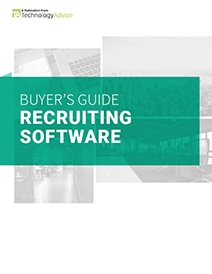Brennon Mobley, the vice president of operations at Relode, was a recent guest on our podcast, B2B Nation.
In this episode, we discussed:
- How healthcare recruiting has changed over the past five years
- Difference between recruiting in healthcare versus other industries
- Biggest challenges in hiring in the healthcare space
- Where healthcare recruiting is headed
Below are some of the highlights from our conversation.*
Shifts in the economy, including the Affordable Care Act, have changed the healthcare landscape.
“In June 2014, there were 678,000 job postings in healthcare. Two years later in June 2016, there were 842,000 job postings in the healthcare industry. A lot of these jobs are a direct result of our economy growth and also different levels of care required by healthcare providers. A lot of companies are utilizing the same practices they were using two years ago to find candidates.
“There’s not a lot of innovation in the space. Their go-to options are:
- Outbound efforts to find applicants
- Job postings
- Using outside agencies, though there is a high cost associated with it
“The healthcare industry is spending an average of $23 billion per year on recruitment, which is about the same size as the Jamaican economy.”
In healthcare, you’re looking for employees to fill highly specialized roles.
“In a lot of industries, you have the luxury of on-the-job training. Not in healthcare. For instance, if you’re looking for a nurse practitioner, this person must have several years of school, certifications, and credentials that are required to meet the need. There are a finite number of people who meet the requirements to fill many of these healthcare jobs.
“The Affordable Care Act is changing how healthcare companies staff their businesses. Previously, there wasn’t as big of a demand for nurse practitioners or physician’s assistants. Due to smaller margins and how reimbursements have changed, companies are changing some of their organizational structures to adapt. Many only have a few physicians on staff and fill the gaps with nurse practitioners, as the requirements for skill and salary are lower. Since nurse practitioners can prescribe medications and do many of the things physicians can do, practices can save money and maintain a high level of care with these modified hybrid staffing models.”
If you don’t have enough staff to meet standards, your department may close down.
“There was a hospital in Vermont last year that had to close 16 percent of their available beds due to a nursing shortage. You can’t just groom someone over time to gain the necessary credentials. If you don’t have enough staff, it hurts the public as less care becomes available for the surrounding area. Companies are spending more and more money to find enough candidates to avoid the scenario above. The average company is spending $17,000 to hire a nurse practitioner, with 80 percent of healthcare companies using outside resources. As a result, there’s room for change in healthcare recruiting.”
* * *
B2B Nation: HR is a podcast for HR professionals featuring expert opinions and advice to help you evolve and push your strategies forward. Check out our other episodes on iTunes, or follow TechnologyAdvice on Twitter.
___
*Some excerpts have been paraphrased to enhance readability.
Top Human Resources Software Recommendations


